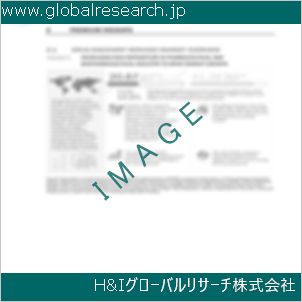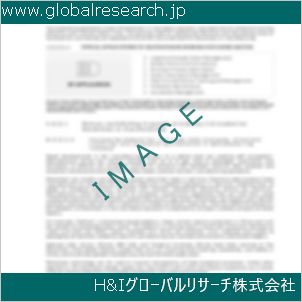Table of Contents
1 Industry Overview of Flon-11
1.1 Definition and Specifications of Flon-11
1.1.1 Definition of Flon-11
1.1.2 Specifications of Flon-11
1.2 Classification of Flon-11
1.3 Applications of Flon-11
1.3.1 Nuclear Application
1.3.2 Non-Nuclear Application
1.4 Industry Chain Structure of Flon-11
1.5 Industry Overview and Major Regions Status of Flon-11
1.5.1 Industry Overview of Flon-11
1.5.2 Global Major Regions Status of Flon-11
1.6 Industry Policy Analysis of Flon-11
1.7 Industry News Analysis of Flon-11
2 Manufacturing Cost Structure Analysis of Flon-11
2.1 Raw Material Suppliers and Price Analysis of Flon-11
2.2 Equipment Suppliers and Price Analysis of Flon-11
2.3 Labor Cost Analysis of Flon-11
2.4 Other Costs Analysis of Flon-11
2.5 Manufacturing Cost Structure Analysis of Flon-11
2.6 Manufacturing Process Analysis of Flon-11
3 Technical Data and Manufacturing Plants Analysis of Flon-11
3.1 Capacity and Commercial Production Date of Global Flon-11 Major Manufacturers in 2023
3.2 Manufacturing Plants Distribution of Global Flon-11 Major Manufacturers in 2023
3.3 R&D Status and Technology Source of Global Flon-11 Major Manufacturers in 2023
3.4 Raw Materials Sources Analysis of Global Flon-11 Major Manufacturers in 2023
4 Capacity, Production and Revenue Analysis of Flon-11 by Regions, Types and Manufacturers
4.1 Global Capacity, Production and Revenue of Flon-11 by Regions 2019-2024
4.2 Global and Major Regions Capacity, Production, Revenue and Growth Rate of Flon-11 2019-2024
4.3 Global Capacity, Production and Revenue of Flon-11 by Types 2019-2024
4.4 Global Capacity, Production and Revenue of Flon-11 by Manufacturers 2019-2024
5 Price, Cost, Gross and Gross Margin Analysis of Flon-11 by Regions, Types and Manufacturers
5.1 Price, Cost, Gross and Gross Margin Analysis of Flon-11 by Regions 2019-2024
5.2 Price, Cost, Gross and Gross Margin Analysis of Flon-11 by Types 2019-2024
5.3 Price, Cost, Gross and Gross Margin Analysis of Flon-11 by Manufacturers 2019-2024
6 Consumption Volume, Consumption Value and Sale Price Analysis of Flon-11 by Regions, Types and Applications
6.1 Global Consumption Volume and Consumption Value of Flon-11 by Regions 2019-2024
6.2 Global and Major Regions Consumption Volume, Consumption Value and Growth Rate of Flon-11 2019-2024
6.3 Global Consumption Volume and Consumption Value of Flon-11 by Types 2019-2024
6.4 Global Consumption Volume and Consumption Value of Flon-11 by Applications 2019-2024
6.5 Sale Price of Flon-11 by Regions 2019-2024
6.6 Sale Price of Flon-11 by Types 2019-2024
6.7 Sale Price of Flon-11 by Applications 2019-2024
6.8 Market Share Analysis of Flon-11 by Different Sale Price Levels
7 Supply, Import, Export and Consumption Analysis of Flon-11
7.1 Supply, Consumption and Gap of Flon-11 2019-2024
7.2 Global Capacity, Production, Price, Cost, Revenue, Supply, Import, Export and Consumption of Flon-11 2019-2024
7.3 USA Capacity, Production, Price, Cost, Revenue, Supply, Import, Export and Consumption of Flon-11 2019-2024
7.4 EU Capacity, Production, Price, Cost, Revenue, Supply, Import, Export and Consumption of Flon-11 2019-2024
7.5 China Capacity, Production, Price, Cost, Revenue, Supply, Import, Export and Consumption of Flon-11 2019-2024
7.6 Japan Capacity, Production, Price, Cost, Revenue, Supply, Import, Export and Consumption of Flon-11 2019-2024
8 Major Manufacturers Analysis of Flon-11
8.1 Manufacturer One
8.1.1 Company Profile
8.1.2 Product Picture and Specifications
8.1.2.1 Type I
8.1.2.2 Type II
8.1.2.3 Type III
8.1.3 Capacity, Production, Price, Cost, Gross and Revenue
8.1.4 Contact Information
8.2 Manufacturer Two
8.2.1 Company Profile
8.2.2 Product Picture and Specifications
8.2.2.1 Type I
8.2.2.2 Type II
8.2.2.3 Type III
8.2.3 Capacity, Production, Price, Cost, Gross and Revenue
8.2.4 Contact Information
8.3 Manufacturer Three
8.3.1 Company Profile
8.3.2 Product Picture and Specifications
8.3.2.1 Type I
8.3.2.2 Type II
8.3.2.3 Type III
8.3.3 Capacity, Production, Price, Cost, Gross and Revenue
8.3.4 Contact Information
8.4 Manufacturer Four
8.4.1 Company Profile
8.4.2 Product Picture and Specifications
8.4.2.1 Type I
8.4.2.2 Type II
8.4.2.3 Type III
8.4.3 Capacity, Production, Price, Cost, Gross and Revenue
8.4.4 Contact Information
8.5 Manufacturer Five
8.5.1 Company Profile
8.5.2 Product Picture and Specifications
8.5.2.1 Type I
8.5.2.2 Type II
8.5.2.3 Type III
8.5.3 Capacity, Production, Price, Cost, Gross and Revenue
8.5.4 Contact Information
…
9 Marketing Trader or Distributor Analysis of Flon-11
9.1 Marketing Channels Status of Flon-11
9.2 Traders or Distributors with Contact Information of Flon-11 by Regions
9.3 Ex-work Price, Channel Price and End Buyer Price Analysis of Flon-11
9.4 Regional Import, Export and Trade Analysis of Flon-11
10 Industry Chain Analysis of Flon-11
10.1 Upstream Major Raw Materials Suppliers Analysis of Flon-11
10.1.1 Major Raw Materials Suppliers with Contact Information Analysis of Flon-11
10.1.2 Major Raw Materials Suppliers with Supply Volume Analysis of Flon-11 by Regions
10.2 Upstream Major Equipment Suppliers Analysis of Flon-11
10.2.1 Major Equipment Suppliers with Contact Information Analysis of Flon-11
10.2.2 Major Equipment Suppliers with Product Pictures Analysis of Flon-11 by Regions
10.3 Downstream Major Consumers Analysis of Flon-11
10.3.1 Major Consumers with Contact Information Analysis of Flon-11
10.3.2 Major Consumers with Consumption Volume Analysis of Flon-11 by Regions
10.4 Supply Chain Relationship Analysis of Flon-11
11 Development Trend of Analysis of Flon-11
11.1 Capacity, Production and Revenue Forecast of Flon-11 by Regions and Types
11.1.1 Global Capacity, Production and Revenue of Flon-11 by Regions 2024-2029
11.1.2 Global and Major Regions Capacity, Production, Revenue and Growth Rate of Flon-11 2024-2029
11.1.3 Global Capacity, Production and Revenue of Flon-11 by Types 2024-2029
11.2 Consumption Volume and Consumption Value Forecast of Flon-11 by Regions, Types and Applications
11.2.1 Global Consumption Volume and Consumption Value of Flon-11 by Regions 2024-2029
11.2.2 Global and Major Regions Consumption Volume, Consumption Value and Growth Rate of Flon-11 2024-2029
11.2.3 Global Consumption Volume and Consumption Value of Flon-11 by Types 2024-2029
11.2.4 Global Consumption Volume and Consumption Value of Flon-11 by Applications 2024-2029
11.3 Supply, Import, Export and Consumption Forecast of Flon-11
11.3.1 Supply, Consumption and Gap of Flon-11 2024-2029
11.3.2 Global Capacity, Production, Price, Cost, Revenue, Supply, Import, Export and Consumption of Flon-11 2024-2029
11.3.3 USA Capacity, Production, Price, Cost, Revenue, Supply, Import, Export and Consumption of Flon-11 2024-2029
11.3.4 EU Capacity, Production, Price, Cost, Revenue, Supply, Import, Export and Consumption of Flon-11 2024-2029
11.3.5 China Capacity, Production, Price, Cost, Revenue, Supply, Import, Export and Consumption of Flon-11 2024-2029
11.3.6 Japan Capacity, Production, Price, Cost, Revenue, Supply, Import, Export and Consumption of Flon-11 2024-2029
12 New Project Investment Feasibility Analysis of Flon-11
12.1 New Project SWOT Analysis of Flon-11
12.2 New Project Investment Feasibility Analysis of Flon-11
13 Conclusion of the Global Flon-11 (CAS 75-69-4) Industry 2024 Market Research Report
| ※参考情報 フロン-11(Flon-11)は、化学式 CCl₃F または CFCl₃ で表される化合物で、CAS番号は 75-69-4 です。フロンという名称は、一般的にフルオロカーボン類を指す商標として広く知られており、特にオゾン層を破壊するハロゲン化合物の一種です。フロン-11は、無色のガスであり、特有の甘い香りを持っています。これは、冷却剤やエアロゾルの推進剤、泡立剤、及び溶剤として非常に広く使用されてきた化合物です。ただし、環境問題への配慮から、現在ではその使用が厳しく制限されています。 フロン-11の特徴としては、まずその化学的安定性が挙げられます。この化合物は多くの化学反応に対して安定しており、高温や他の化学物質と反応しにくい性質を持っています。そのため、長期間にわたって環境中に残存しやすく、特に大気中では長期間での分解が難しいことから、オゾン層への影響が問題視されました。また、密閉された空間においては、特に呼吸による健康への影響が懸念されることも特徴の一つです。 フロン-11には、さまざまな用途があります。従来はエアコンや冷蔵庫の冷却剤、スプレー式製品の推進剤、及び泡立ち剤として広く使用されてきました。特に、冷却サイクルの中での高い熱交換効率や、低温における圧縮特性から、多くの冷却システムに導入されました。これにより、日常の生活や産業において高い便益をもたらしました。 しかし、フロン-11の使用は、1990年代に入ると国際的な環境問題として注目されるようになりました。特に、オゾン層の破壊や地球温暖化への寄与が懸念され、その結果、1987年に採択されたモントリオール議定書においてフロン類の使用が規制されることとなりました。この合意により、フロン-11の生産と消費は段階的に削減され、最終的には多くの国で使用が禁止されることになりました。 フロン-11に代わる代替物質として、HFC(ハイドロフルオロカーボン)、特にHFC-134a(1,1,1,2-テトラフルオロエタン)などが登場しました。HFCはフロン-11に比べてオゾン層への影響が低いとされていましたが、温暖化ポテンシャルが依然として存在するため、これもまた環境への負荷が問題視されています。最近では、さらなる環境負荷低減を目指して、自然冷媒や新しい化合物が模索されています。 フロン-11に関連する技術としては、冷却システム全般における設計と運用方法の革新が考えられます。近年では、ゼロエネルギー冷却技術や、省エネルギー型の冷却方法が注目を集めています。これらの新技術は、従来の冷却システムにおける化学物質への依存を軽減することを目指しています。また、廃棄物処理においても、無害化技術やリサイクル技術が開発され、フロン-11のような物質の安全な処理が求められています。 最後に、フロン-11の影響は単なる環境問題にとどまらず、体調や健康への影響も考慮する必要があります。特に大気中濃度が高い場合は、呼吸器系の疾患や中枢神経系の障害を引き起こす可能性があるため、職場や生活空間での管理が重要です。 このように、フロン-11は、その便利な特性から広く使用される一方で、環境への影響が大きな問題となっています。代替物質の開発や新しい冷却技術の導入が進められる中、環境保護とこれまでの便利さとのバランスを取ることが求められていると言えるでしょう。 |
❖ 免責事項 ❖
http://www.globalresearch.jp/disclaimer












